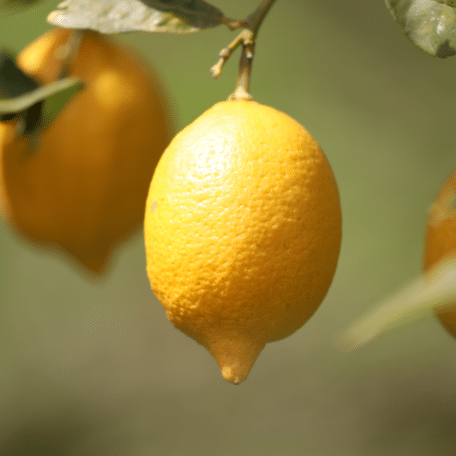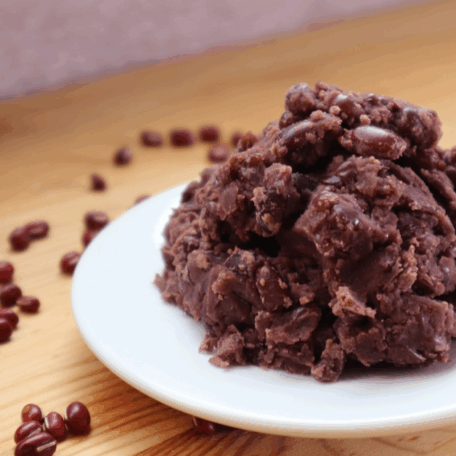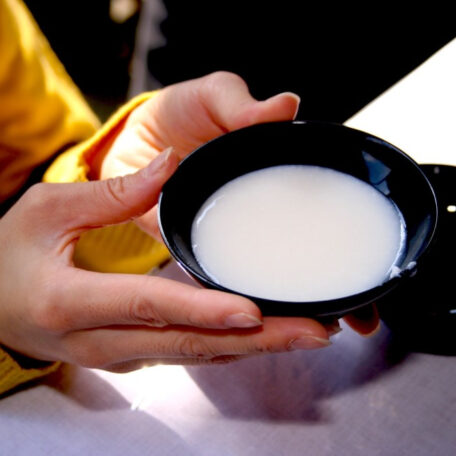Tradition vs. Fashion: Exploring Sugamo and Harajuku in Tokyo
Jul 23, 2024
BY Maddy Vandelden

Harajuku stands as the vibrant center of youth culture, bursting with colorful street fashion, trendy cafes, and bustling energy that attracts young people from around the world. It’s a hub for pop culture, frequently featured in fashion magazines, and home to cutting-edge trends. Opposite Harajuku, Sugamo offers a nostalgic charm with its traditional shops, serene atmosphere, and a strong sense of community catering to its elderly residents. Coined as “Old People’s Harajuku,” the area is famous for its Jizo-Dori shopping street and traditional Japanese sweets. The neighborhood is also popular for its mascot, Sugamon, a fluffy white duck! Whether you’re seeking the tranquility of old-world Japan or the excitement of contemporary trends, join us as we compare and contrast Harajuku and Sugamo, revealing the charm of both neighborhoods.

Kimono Fabrics and Accessories – Photo Credits: Some no Omi
Fashion
Sugamo
The fashion found here takes on a distinct charm that reflects its reputation as a neighborhood beloved by Tokyo’s older generations. Sugamo boasts a fashion scene that blends nostalgia with timeless elegance. Here, you’ll find a myriad of traditional Japanese attire such as kimono and yukata, often adorned with vibrant patterns and intricate designs. With this in mind, it is easy to see that Sugamo embodies a sense of refinement and cultural heritage, where elderly residents and visitors alike embrace classic styles with grace and sophistication. Beyond traditional wear, there are also boutique shops that offer tailored clothing and accessories that emphasize craftsmanship.

Red underwear shop in Sugamo – Credit: Jessica Iragne
One quirky item you’ll find everywhere in Sugamo is red underwear! Known as “aka-pantsu,” these vibrant garments are more than just a bold fashion statement – they’re believed to bring good luck and health. The tradition of wearing red underwear dates back to ancient times, with the color red symbolizing protection and vitality. In Sugamo, these lucky undergarments have become a popular gift, especially among older adults seeking to boost their well-being. If you’re wondering where to shop for these, don’t worry! There are many stores dedicated to just selling red underpants. This unique trend adds a fun and whimsical element to Sugamo’s otherwise traditional and elegant fashion landscape.

Doki Doki – Photo Credit: La Carmina
Harajuku
Harajuku is the place to shop if you’re a fan of bold creativity and eclectic styles! Renowned globally for its avant-garde fashion, Harajuku’s streets are a runway for self-expression and experimentation. The scene includes anything from elaborate costumes to trendy cutting-edge streetwear. Iconic fashion districts like Takeshita Street and Omotesando Avenue offer many boutiques, vintage shops, and flagship stores – all contributing to the neighborhood’s reputation as a trendsetter. We recommend traveling down the alleys of Harajuku to find smaller vintage shops that curate clothing for different aesthetics. Harajuku remains a place where fashion-forward individuals can seek inspiration and push the boundaries of style.
Here are some streetwear stores that encompass the Harajuku style:
6% Doki Doki: Japan, 〒150-0001 Tokyo, Shibuya City, Jingumae, 4 Chome−28−16 2F
Candy Stripper: Japan, 〒150-0001 Tokyo, Shibuya City, Jingumae, 4 Chome−26−27
Kinji: Japan, 〒150-0001 Tokyo, Shibuya City, Jingumae, 4 Chome−31−10 YMスクエア原宿B1F
Laforet: 1 Chome-11-6 Jingumae, Shibuya City, Tokyo 150-0001, Japan

Sugamon at Bath House – Photo Credits: Sugamoyu
Shopping and Entertainment
Sugamo
Here at the neighborhood’s famous Jizo-Dori, you can find an array of shops selling everything from sweets and pickles to comfortable clothing and specialty teas. As mentioned earlier, this street is also famous for its numerous stores offering red underwear. For a truly relaxing experience, visit Sugamoyu, an indoor open-air bath. This historic bathhouse is located right next to Jizo-Dori and offers a soothing retreat with its warm, mineral-rich waters. After a day of shopping, unwinding in the Sugamoyu’s traditional Japanese baths provides the perfect way to relax and rejuvenate. Overall, Sugamo’s combination of nostalgic shopping and relaxing entertainment options makes it the perfect place to spend an afternoon.
Sugamoyu: 4 Chome-13-9 Sugamo, Toshima City, Tokyo 170-0002, Japan

Design Festa Gallery Harajuku – Photo Credit: savvytokyo
Harajuku
The iconic Takeshita Street is the perfect spot for shopping, whereas Omotesando Avenue features more luxury brands and chic designer stores. Besides shopping, there are immersive art galleries and lively music venues. One must-visit spot is the Design Festa Gallery, an art gallery that showcases the work of independent artists not only from Japan but around the world. The gallery is full of creativity, offering visitors to experience cutting-edge art in various forms, from paintings and sculptures to installations. For a bit of tranquility amongst the shopping and entertainment, visit Yoyogi Park, a green space perfect for picnics and leisurely strolls. Whether you’re a fashionista hunting for the latest trends or an adventurer looking for a lively night out, Harajuku’s shopping and entertainment scene promises endless excitement and discovery.
Design Festa Gallery: https://designfestagallery.com/
Design Festa Gallery Address: 3 Chome-20-18 Jingumae, Shibuya City, Tokyo 150-0001, Japan
Yoyogi Park: 2-1 Yoyogikamizonocho, Shibuya City, Tokyo 151-0052, Japan

Koganji Temple – Photo Credit: MyStays
Cultural Landmarks
Sugamo
The Jizo-Dori shopping street is the heart of Sugamo, known for its historical and spiritual significance. One of the most prominent cultural landmarks is the Koganji Temple, home to the famous Togenuki Jizo statue. Visitors come here to wash the statue in the hope of healing ailments and to buy charms for good health. Another notable shrine is the Shinshoji Temple, which boasts beautiful architecture and tranquil gardens, providing a perfect escape from the busy city. A more amusing landmark is the Sugamon statue, where visitors can pet Sugamon’s bottom for good luck.
Koganji Temple Address: 3 Chome-35-2 Sugamo, Toshima City, Tokyo 170-0002, Japan

Meiji Shrine – Photo Credits: Meiji Shrine
Harajuku
Harajuku is not only a fashion and entertainment hub but also an area rich with culture. The most renowned cultural site in Harajuku is the Meiji Shrine, a serene Shinto sanctuary dedicated to Emperor Meiji and Empress Shoken. Located in a lush forest, the shrine provides a peaceful retreat from the bustling city, where visitors can partake in traditional rituals, admire the stunning architecture, and stroll through tranquil gardens. Another cultural gem is the Togo Shrine, which features beautiful torii gates and a serene pond. Harajuku is also home to the Ukiyo-e Ota Memorial Museum of Art, which showcases woodblock prints from the Edo period. Be sure to check out these cool spots the next time you’re in Harajuku!
Meiji Shrine Address: 1-1 Yoyogikamizonocho, Shibuya City, Tokyo 151-8557, Japan
Togo Shrine Address: 1 Chome-5-3 Jingumae, Shibuya City, Tokyo 150-0001, Japan
Ukiyo-e Ota Memorial Museum of Art Address: 1 Chome-10-10 Jingumae, Shibuya City, Tokyo 150-0001, Japan

Strawberry Milk Shortcake Kakigori – Photo Credits: Atelier Sekka
Foods
Sugamo
Along the busy, historical shopping street, visitors can find cozy eateries and stalls serving up local delicacies like imagawayaki (sweet red-bean filled pancakes), senbei (rice crackers), and various types of Japanese sweets like dango (sweet rice dumplings) and Manju (sweet buns filled with red-bean). For daifuku lovers, Mizuno offers shio-daifuku, filled with sweet bean paste and salt. Candy lovers should make a stop by Sugamo Kintaroame for some unique homemade delights. Another popular spot is Fight Gyoza, a dumpling restaurant dedicated to making deep-fried and fluffy gyoza. And on warm days, don’t miss out on the kakigori from Atelier Sekka for a refreshing sweet treat.
Mizuno Address: 3-33-3 Sugamo, Toshima-ku, Tokyo 170-0002
Sugamo Kintaroame Address: 3 Chome-18-16 Sugamo, Toshima City, Tokyo 170-0002, Japan
Fight Gyoza: 4 Chome-23-6 Sugamo, 豊島区 Toshima City, Tokyo 170-0002, Japan
Atelier Sekka Address: 3 Chome-37-6 Sugamo, Toshima City, Tokyo 170-0002, Japan
Learn more about Sugamo’s food from this article: https://arigatojapan.co.jp/sugamo-food-and-culture-for-everyone/

Soba at Baso Omotesando – Photo Credit: Baso Omotesando
Harajuku
Harajuku is celebrated for its diverse array of sweet delicacies and themed cafes, offering visitors the best food experiences! Simply walking down Takeshita Street, visitors can get a glimpse of the inventive crepes filled with fresh fruits to matcha desserts served with delicious pastries. From the artistic 3-D latte creations at Cafe Reissue to more savory offerings like the carbonara soba at Baso Omotesando, the options are endless. For pastry aficionados, HIGUMA Doughnuts serves up freshly made, flavored treats. Contrasting with the more traditional foods found in Sugamo, Harajuku’s food culture emphasizes creativity and presentation.
Reissue: 3 Chome-25-7 Jingumae, Shibuya City, Tokyo 150-0001, Japan
HIGUMA Doughnuts x Coffee Wrights: 4-chōme-9-13 Jingūmae, Shibuya City, Tokyo 150-0001, Japan
Baso Omotesando: 6 Chome-11-7 Jingumae, Shibuya City, Tokyo 150-0001, Japan
Whether you’re soaking in the nostalgic charm of Sugamo’s traditional delights or diving into the vibrant, trendsetting world of Harajuku, Tokyo offers an amazing spectrum of experiences. Sugamo’s serene atmosphere and classic flavors provide a comforting embrace of old Japan. In contrast, Harajuku’s electrifying streets and innovative fashion scene are full of youthful energy and creativity. Both neighborhoods, though different, have rich diversity that makes Tokyo fascinating. So, if you’re seeking a journey through history or want to taste new foods, Tokyo’s Sugamo and Harajuku promise unforgettable adventures!
DISCOVER HARAJUKU AND SUGAMO LIKE A LOCAL ON ONE OF OUR DELICIOUS FOOD TOURS!
Book your pocket wifi now to stay connected through your entire Japan Journey!

Be sure to get the JR Pass to make navigating Japan during your trip that much easier!

YOU MIGHT ALSO LIKE




